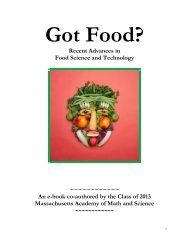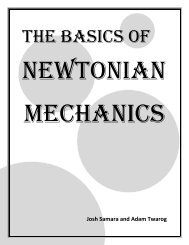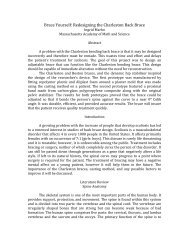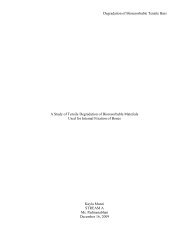Art Forgeries and Their Detection - the Scientia Review
Art Forgeries and Their Detection - the Scientia Review
Art Forgeries and Their Detection - the Scientia Review
Create successful ePaper yourself
Turn your PDF publications into a flip-book with our unique Google optimized e-Paper software.
Dendrochronology<br />
Dendrochronology is a scientific method known as tree-ring dating. The<br />
technique came into use during <strong>the</strong> early part of <strong>the</strong> 20th century <strong>and</strong> was<br />
discovered by A.E. Douglass from <strong>the</strong> university of Arizona. Knowing <strong>the</strong><br />
age of a tree is important to art historians because it allows <strong>the</strong>m to date<br />
<strong>the</strong> panel paintings <strong>and</strong> may indicate where <strong>the</strong> painting was done based<br />
on <strong>the</strong> type of wood. Panels are trimmed of <strong>the</strong> outer rings from <strong>the</strong> tree<br />
<strong>and</strong> usually only consists of a small radius of <strong>the</strong> trunk, so often only <strong>the</strong><br />
earliest possible date can be determined for <strong>the</strong> actual arrival of a sea-<br />
soned raw panel. This process can be used on any wooden object, but it<br />
may not be very useful because it is necessary for <strong>the</strong>re to be about a hun-<br />
dred rings to determine <strong>the</strong> age accurately.<br />
Eggcaetera by Pascal Oudet is not a forged<br />
piece of artwork <strong>and</strong> this can be verified<br />
through <strong>the</strong> use of dendrochronology.

















